Reposted with permission from Waggoner Nov 30, 2024. Original article.
During the 14-month expedition beginning May 1, 2025 on the sailing vessel One Ocean, scientists on board will be conducting various scientific ocean research, including a pole-to-pole study of the presence of bull kelp. This study is the first latitudinal analysis of floating kelps from Alaska to Patagonia.
Circling the Americas, the project will emphasize the importance of bull kelp forests, while mapping existing forest locations. Bull kelp is known to be present along the coastlines of central and northern California, along the coasts of Oregon, Washington, and British Columbia, and through Alaska halfway along the Aleutian Islands. Bull kelp is also found along the coast of South America, especially along Chile and Argentina.
Around the Americas Bull Kelp Study. The University of Victoria, Woods Hole Oceanographic Institution, and the University of California will be participating in Around-the-Americas kelp study. Their extensive research will include:
- Kelp sampling following the route of the expedition’s sailboat, One Ocean.
- Mapping of floating kelp via drone (UAV) imagery at 50m and 5m altitudes.
- Satellite imagery from Level 2 Sentinel 2 (10m resolution) and Planet Scope (3m resolution) for large scale mapping.
- Assessment of coverage and health of kelp-encrusting bryozoans.
- Measured sea surface and column temperatures via a Thermal IR sensor.
- Data analysis and wind conditions.
- An ROV and drop camera to assess kelp bed depth profiles.
- Record the presence of sea urchins and stars.
What is Bull Kelp? Bull kelp, or Nereocystis, is an algal species that creates our rich underwater ecosystem where hundreds of species thrive. Bull kelp is home to shrimp, isopods, crab, and abalone, which serve as the food source for herring, rockfish, juvenile salmon, and lingcod which in turn support the food web for marine birds and marine mammals. Bull kelp, considered the forests of the ocean, serves as the canopy under which countless other seaweeds grow. Bull kelp can grow 6-10 inches a day and reach heights of 60-100 feet in a matter of months.
Bull Kelp Growth. The power of ocean nutrients and sunlight filtered through the ocean water, energizes the process that uses carbon dioxide

combined with water to create sugars – plant matter – the process called photosynthesis, the engine for all life on earth. Massive and hefty, bull kelp thrives in the nutrient-rich, cold water of the Northern Pacific. The molecules in cold water are packed more tightly together than in warm water, so cold ocean water holds a greater density of nutrients to support growth. Living a few hundred yards from shore, bull kelp attaches itself to a rocky bottom where there is enough sunlight to promote growth. The bull kelp stipe, or tough stalk, stretches to the surface and ends in a single bulb, where blades stream out from the bladder, as many as sixty ribbons of thin golden fronds. The young bull kelp or Nereocystis, uses the power of sunlight and the nutrients of the ocean to become massive, majestic bull kelp in only a matter of months. The entire organism grows anew each season, typically starting in late winter or early spring. With the onset of winter storms, the entire bull kelp organism dislodges from the ocean floor and washes away, sinking as it breaks up or washing ashore on sandy beaches.
Reproduction. Spore patches (sori) on bull kelp are the acorns of the kelp forest. These bundles of millions of spores mature and gravitate to the outer end of the blades while new spores emerge closer to the bladder. With the light of dawn, spore patches fall away and float to the ocean bottom, where they settle near the base of the parent. Within hours, spores are released into the water column to disperse. The tiny spores settle on the rocky bottom and germinate to start the phase again of the Nereocystis life cycle.
Harvesting. Kelp forests provide a variety of commercial and ecosystem services to humans. Bull kelp is eaten as a delicacy in some countries. It is also used in pharmaceuticals, fireproofing fabrics, as an ingredient in some fertilizers, and as a gelling agent in foods. Largescale harvesting of kelp began during WWI, when it was used as a source of potash to make gun powder. At that time, harvesting was unregulated. Today, kelp harvesters must record their harvest activities, including the amount of kelp harvested and from what location.
Ocean Forest Threats. Bull kelp is consumed by marine grazers like snails and kelp crabs and by voracious sea urchins that can consume

enough kelp to remove entire forests. Pollution in the form of sewage, industrial waste, and pesticides carried from freshwater runoff can impair kelp growth and reproduction. Southern-ocean events that bring warm water and heavy seas also take a toll on kelp forests.
Marine Biology undergraduate Grace Dalton, with the University of Victoria, will be on board serving on the pole-to-pole bull kelp research. A website is currently being built to share the open-source of collected kelp data. Once live, it will be the hub for this kelp study. Stay tuned for more information about website sources as you follow the Around-the-Americas Team. To learn more about the expedition and related scientific research, go to www.oneislandoneocean.com.
Photos: NOAA and
Restoration.org

